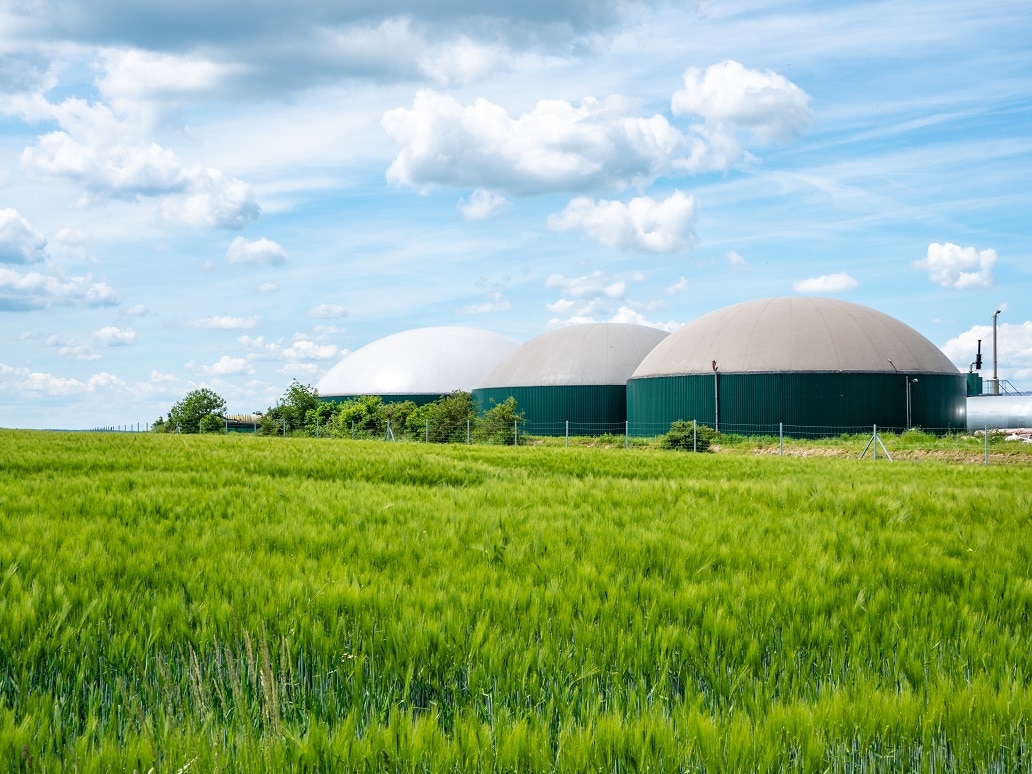
BIOGAS AND BIOMETHANE FROM SLAUGHTERHOUSE WASTE

BIOGAS AND BIOMETHANE FROM SLAUGHTERHOUSE WASTE
BIOGAS PRODUCTION
The use of slaughterhouse waste as a substrate for biogas production significantly improves the efficiency of the methane fermentation process and solves the problem of their disposal. Producing biogas from waste is an opportunity to use very problematic rejects to produce electricity and heat, which leads to energy independence for farmers and to reduce the unpleasant odor that arises when animal waste is stored.
HOW TO PRODUCE BIOGAS FROM SLAUGHTERHOUSE WASTE?
The highest efficiency in the production of biogas is characterized by such raw materials that are characterized by a high content of fats, e.g. sedimentary fats and meat waste classified as category II and III. Animal waste is generated in places such as slaughterhouses, butchers and fish and meat processing plants. The cost of obtaining such waste is much lower than in the case of the popular maize silage.
Unused excess biogas can be used in a suitable boiler to produce steam for the technological needs of the slaughterhouse. On the other hand, the by-product of fermentation - digestate, is a valuable agricultural fertilizer with a large amount of macro and microelements, which can be used in plant production.
HOW TO HANDLE ANIMAL BY-PRODUCTS
By accepting animal by-products into the biogas plant, it is possible to maintain the status of an agricultural installation after meeting the relevant requirements. It should be remembered that before throwing the raw material into the fermentation chamber, it must be crushed and subjected to thermal treatment. Animal waste is a very good substrate for biogas plants, surpassing the energy used in most cases of maize silage, slurry, sewage sludge or organic waste.
HOW DOES THE BIOMETHANE PLANT WORK
Biomethane is a gaseous fuel produced in the process of biogas purification from sulfur compounds and carbon dioxide. It is a pure gas of organic origin, consisting of at least 98% methane. The carbon dioxide is separated and treated to make it usable. Biomethane contains trace amounts of other gases such as oxygen, nitrogen and hydrogen. In traditional agricultural biogas plants, biogas has a methane content of 55%. Biomethane corresponds to the parameters of natural gas. After liquefaction, it can become a motor fuel - bioLNG.
POSSIBILITY OF USING BIOMETHANE
- can be used in the same way as natural gas and injected directly into the natural gas network
- it can be liquefied into bioLNG and transported anywhere
- can be used directly to drive trucks
- applicable in all areas where natural gas is used (production of electricity and heat)
SLAUGHTER WASTE IN A BIOGAS PLANT
Transport and management of slaughterhouse waste is not an easy task, which is why using it for biogas production is, in the opinion of many experts, an effective and currently very economical method. The waste generated in slaughterhouses has a high content of organic matter, which can be used as a raw material for methane fermentation.






